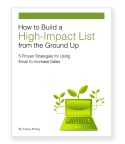Is green marketing really dead?
In his May 16 post, Makower told his readers that the time had come to admit defeat and move on—green marketing had failed.
But in what some consider to be a stroke of good luck, Makower’s message—wildly misinterpreted by some and condemned as uncharacteristically vague by others—didn’t ripple far beyond the marketing and consulting arena.
However, regardless of its reach, there is no denying the timeliness of his message or the fact that green marketing is unquestionably undergoing some important changes.
The evolution of green marketing
Green marketing, as defined in the May 16 piece, is any marketing “aimed at getting people to buy stuff that is better for the environment” or that focuses on a “more just and sustainable world.”
And this approach has proven a bust, as evidenced by the less than 2% market share held by green products.
But as bleak as this sounds, there is still some good news to report.
For while focusing solely on environmental benefits has turned out to be largely ineffective in the business-to-consumer world, the business-to-business sector is a whole other ball game.
According to Makower, individual consumers have become confused over the hodgepodge of companies and green claims being thrown at them—or they're simply unable to shoulder the “sustainability tax” placed on green products.
However, companies, government agencies, universities, etc., have discovered that there are sound business reasons for altering their buying habits, and they're using their buying power to do just that.
But at the same time, fewer and fewer companies are talking about “going green,” looking instead for ways to use “green” approaches to enhance their business.
With all these changes happening in green marketing today, how does the environmental service or technology marketer stay ahead of the game?
Here are a couple of tips to help get you going in the right direction.
Focus on the market.
Depending on whether your target market is business-to-business or business-to-consumer, the approach you take will obviously vary slightly.
In the B2C realm, any environmental features will most likely need to take a backseat to the non-environmental aspects of your product or service—i.e., energy efficiency, comfort, convenience, money saving features.
But, as with a B2B audience, much of this will depend on the particular segment you’re targeting.
Indeed, there are still a lot of consumers out there who really do care deeply about the environmental consequences of their actions, so marketing that’s focused on the environmental advantages would do well with this type of audience.
Likewise, focusing on the environmental side of things also remains effective in the B2B world. But altruism isn’t the dominant motivation here, and marketing techniques need to reflect that.
For example, the business-to-business buyer wants to know how your product or service will help her company eliminate waste and inefficiency, improve quality, accelerate innovation, and engage employees.
Whether you’re targeting B2B or B2C customers, the key lies in knowing the wants and needs of your audience. Because any message that does not address these two factors will be a wasted message.
So ask for feedback.
Even something as simple as a short survey can provide you with precious insight into the mind of your target audience—insight that will help you put together the most effective marketing campaign.
Be honest and transparent.
Joel Makower’s blog post for GreenBiz.com focused mainly on the effect transparency has on consumer-facing marketing, but let’s face it. Whether you’re talking B2C or B2B, being honest with customers is just good business.
If you want to be seen as an expert in your field, with more business than you know what to do with, then building loyalty and trust among consumers is absolutely essential.
And to do this you need to keep honesty first and foremost in all your communications.
Do you have a product that is environmentally preferable to a lot of other products on the market but still isn’t quite “there” yet?
Are you in the process of phasing out older, less sustainable methods of producing your goods?
Well, unless you want your competitors to do it for you, you need to be sure you’re the one talking about these things.
If your prospects know where you are now and where you plan to be in the future, they’ll have a better idea of who you are as a company. And they’ll reward your honesty with respect and loyalty.
So when it comes right down to it, green marketing isn’t truly dead, it’s just evolving.
And marketers who stay in front of the evolutionary curve will not only grow their business, they’ll ensure they avoid that most unpleasant of fates—extinction.
Return to articles




